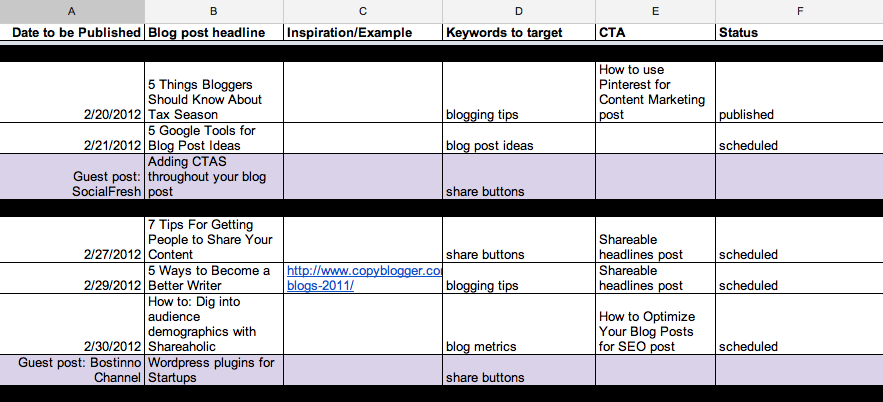The artistic director just handed you the keys to the Twitter and Instagram accounts. Now what?
With money tight for artistic organizations, many have found marketing success with the magic of social media. Great exposure, controlled messaging and it’s mostly free.
If only they can get someone to commit to creating interesting content and to post regularly.
Congratulations! That’s you. You may be kicking yourself right now but you’re probably excited, too.
That’s good because you’re going to wear a lot of hats. Marketing director, social media manager, director of development. Your artistic director is likely expecting you to fill all of these roles.
It’s safe to assume you are social media savvy. You probably post to Facebook, Twitter and Instagram regularly and that makes you a great asset in this position.
So, how does promoting your theatre through social media differ from the conversations you’re already having with friends and fans with your personal accounts?
You’re going to want to focus on your theatre’s target audience.
01 – Get to Know Who Your Target Audience Is

Your target audience is who you’ll tailor your content to. Do you know who they are? Let’s assume you aren’t sure right now. If you are, you can skip ahead. I don’t mind.
The simplest way to partially figure out your target audience is to look at who has been coming to your shows already. Figuring out your audience’s age, sex and cultural preferences is a good place to start.
But you want to delve deeper.
- What made them come to your show in the first place?
- What are their common interests?
- Do they have similar characteristics?
It will be helpful to find out who other theatres like yours are targeting. Keep your eye out for opportunities to fill a niche the other theatres aren’t.
Here are a few more audience demographics to lock down when possible.
- Income
- Education
- Ethnic Background
- Occupation
- Location
This information will be invaluable when you’re figuring out things like ticket prices, performance location, promotional media and performance material.
There are also psychographics of your audience to consider.
- Lifestyle
- Values (religious, political, family etc)
- Behavior
- Personality
Ask yourself what sort of shows are of interest to your target audience, where they go for information and what sort of events they like to attend.
When you have this information you’ll find your marketing less challenging and you’ll have a damn good idea of what kind of product your target audience likes. This should help in developing your season, too.
Once you have a good idea who your target audience is, start googling their demographic. Where do they hang out online and off? Do they like beer or wine? Starbucks or Indy places?
Answering these last questions is particularly useful for when you want to do some good old fashioned grass roots marketing. More on that in a future post.
Now that you have a better idea about who your target audience is, we can go to step two.
02 – Creating your Social Media Strategy

Just the phrase “social media strategy” may conjure images of a marketing pro pouring over mystical charts while they cross reference marketing case studies from the last five years. But a social media strategy doesn’t need to be so formal.
Your social media strategy is simply a summary of what you’d like to achieve with your marketing and how you plan on going about it.
Establish objectives you want to achieve.
- Objectives will help you gauge your success and prove your return on investment.
- Your objectives should match your marketing strategy and business goals.
- Likes and retweets are fantastic but your strategy should not rely on them.
- If you want to delve a little deeper into analytics that will help you figure out how your strategy is working, check out this article from Hootsuite: 7 Social Media Metrics That Really Matter – And How to Track Them.
Using S.M.A.R.T. Goals
Your objectives should be:
- Specific
- Measurable
- Attainable
- Relevant
- Time-bound

To get the ball rolling write down three social media goals. How will each look when completed? Use that information to figure out how to track your goal.
The Social Media Audit
Before you can delve further into your social media marketing plan you may find it helpful to see how your current social media channels are working.
- WHO is currently connecting with you on social media?
- WHAT social media sites are your target audiences using?
- HOW does your social media presence compare with other theatres?
Here is a free social media audit template that you can use to help:
Social Media Audit Template via Hootsuite.
With your audit complete you can decide which social media channels to focus on and which to eliminate.
Specific Goals for Each Social Media Channel
It’s a great idea to create individual, one sentence goals for each social media channel you use. One for Facebook, another for Twitter and a third for Instagram etc.
You want to determine what the purpose of each of your social media channels is and how you plan on leveraging them. By creating one sentence missions for each channel it will help you focus on specific objectives for each. For instance:
“We will use Snapchat to share the lighter side of our company and connect with younger prospect customers.” (via Hootsuite)
For further information on individual social media missions have a look at:
One Social Media Profile, One Mission (via Hootsuite.)
Now that you know who your target audience is and you’ve completed your social media audit, you can move on to something a little more fun (I think!).
03 – Developing and Sharing Content

The exciting thing about social media is that you can discuss, produce and curate content for other people, while promoting organizational objectives.
Content development and curation are the meat and potatoes of social media. You’ll spend the majority of your time creating for and interacting with your target audience.
You could simply post whenever you have something to say or when you want to do some push PR for your show (“We’re opening next week!”). But it is far wiser and more likely to build an audience for you if you post consistently.
To start, you’ll want to put together a content marketing plan and answer these questions:
- What type of content do you plan to post and promote?
- How often will you post content?
- What is the target audience for each type of content?
- How will you promote your content?
Develop a Content Calendar

Your content calendar lists dates and times you plan to publish to your social media channels.
You want to schedule your posts in advance. The additional benefit is that you can concentrate on the language and message at your leisure, and your content will be better for it.
This also allows you to develop numerous messages that you can release through your social channels at strategic moments.
It doesn’t hurt to have some good content loaded and ready to go for days that you aren’t able to come up with new content, too.
“Be spontaneous with your engagement rather than with your content.” (via Hootsuite)
A content calendar can be made simply in a spreadsheet and might look like this:

Your calendar should reflect the mission statement you’ve assigned to each social profile.
It may also be helpful to keep the following Rule of Thirds in mind.
- One third of your social content promotes your business, converts readers and generates profit.
- One third of your social content share ideas and stories from thought leaders in your industry or like minded businesses.
- One third of your social content should be personal interactions with your audience.
The Rule of Thirds reminds me of a popular Twitter post philosophy. You should be sharing 80 percent of related content from other people and 20 percent of content you create. This is of course debatable but it is a good rule of thumb and one I practice myself.
With free services like Hootsuite you can schedule tweets for future publishing. Most blog hosts allow you to set a publishing date far in advance if you’d like, too.
Use these tools and build a nice collection of original content that you can use whenever you need it.
![]() Pro-Tip: Each day that you don’t post something is a day you may have missed out on likes, shares or a patron who was not engaged.
Pro-Tip: Each day that you don’t post something is a day you may have missed out on likes, shares or a patron who was not engaged.
Creating Content for Your Audience
When you’re thinking of material to share with your audience, consider the following:
- How will it benefit and inform them?
- Does it fit with your organization’s objectives?
- Which social media channel will you publish it on? You will want to tailor your message to each account. This is where your one sentence mission objectives mentioned above come in.
Be Specific. Very.
When considering what might be of interest to your audience, it’s helpful to think about creating content for a single person.
Instead of thinking, “I want this to reach and enlighten everyone in my target demographic!” think about one specific person in your target demo that will find your information useful.
This person is likely not a real one. But they should be specific in your mind. You want to tailor your content to “Charles Elliot, the Guy Who Makes Corn Cob Pipes and Roller Skates to Work. Loves Cajun Music.” and not “Male, 24-45, makes $75k a year.”
Take it from Steinbeck.

Most theaters will want to share:
- Stories behind the current play. Especially if it’s based on a historical event or person.
- Cast and Crew bios.
- Profile on the Playwright or Director.
- High quality photos of the cast. Either taken during a dry run (or cue to cue) or, out of character publicity stills. Posing your cast for photos as if they are performing will not offer great results.
- Quick one minute video interviews of cast and crew. They should be entertaining and easily shareable.
- Long form, behind the scene videos. These can be clips of rehearsals or even of the callbacks if your cast doesn’t mind.
One of the most important things to consider here is that you want people to see you and your organization as you are, an organization of passionate real people.
Here are a few things I have enjoyed from theatre marketing departments not listed above.
- Readable script of show in PDF or similar format.
- Short, professional and informative introduction videos to the organization.
- 360 degree online tour of the theater. Here’s one for the 5th Avenue in Seattle: http://www.gotyoulooking.com/1fifthavenuetheatre/mht.html
- Organization announcements, theater renovations, budget goals/successes, history of theater building or its neighborhood.
- Funny, short clips that show cast and crew personalities.
What sort of content have you enjoyed when following a theater’s social media accounts?
Please comment and share.
I enjoy hearing your thoughts on the subject of theatre marketing. I love learning new things, too.
If you have ideas to add or resources to share, please do so. I write these to spark conversation and to offer information that I hope will help your theatre organization succeed. This two way conversation is beneficial to us both.
Please leave your thoughts in the comments and share this article on Facebook, Twitter or whatever fine social media channels you enjoy.
Best,
Jeremy


I’m a PR student interested in working with social media and I really liked your concept of The Rule of Thirds in social media content. I’ve seen it as an art principle, but never applied to social media. It seems like a good way to mix up the content you’re posting, while still providing relevant and engaging material to your followers
LikeLiked by 1 person
I think so! The Rule of Thirds and the 80/20 for Twitter are great guidelines to work from.
Also, if you have a few minutes have a look at this Marketing for Artists 101 video by visual artist Bobby Chiu.
Some great take aways from the video:
Think of your website content as the best of best, your portfolio.
Instagram, FB, Twitter etc are better for sharing things happening right now, in the moment.
To mix up your posts, adapt these to your art:
1 post art, 1 post photo, 1 post old art #tbt etc, re-post of someone else’s art, 1 promotional post.
It’s a great video.
Thanks for your comment and thoughts, too!
LikeLike